Introduction
June 6, 1944, witnessed an epochal turning point in history—a colossal invasion launched by the Allied forces on the sun-kissed shores of Normandy, France. With this audacious move, Nazi Germany’s tight grip on Europe began to crumble, and the world would never be the same again. D-Day, as this pivotal event is famously known, continues to be commemorated and revered nearly eight decades later. In this article, we embark on a profound exploration of D-Day, delving into its historical context, strategic significance, and everlasting reverberations across the globe. Join us as we journey back in time to fathom the sheer magnitude of this awe-inspiring military undertaking.
D-Day: The Historic World War II Invasion
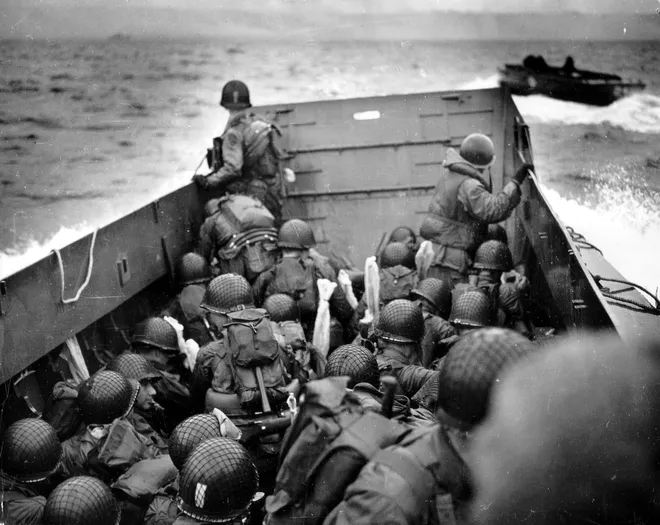
June 6, 1944, eternally etched in the annals of history as D-Day, epitomizes the largest amphibious invasion in the annals of modern warfare. Over 156,000 valiant Allied troops hailing from the United States, Canada, the United Kingdom, and other participating nations, fearlessly stormed the Normandy beaches. The objective was resolute: to establish an unyielding foothold on the European continent and, ultimately, deliver it from the clutches of Nazi oppression. But what propelled this monumental operation into motion?
The Context: World War II and the Nazi Stranglehold
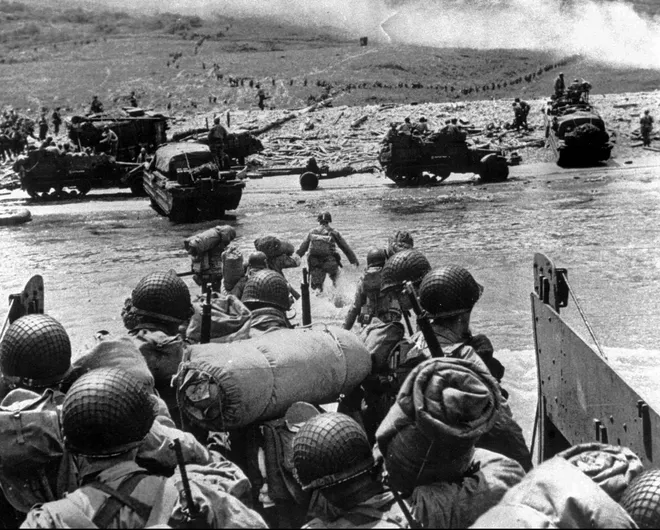
Before immersing ourselves in the intricacies of D-Day, it is paramount to comprehend the broader context of the cataclysmic World War II. Adolf Hitler’s Nazi Germany had ruthlessly seized vast expanses of European territories, leaving nations decimated and languishing under the yoke of oppression. The Allied powers, comprising the United States, the United Kingdom, the Soviet Union, and other valiant nations, united their forces to combat this tyrannical regime and restore freedom’s enduring flame.
The Pioneering Efforts and Elaborate Preparations
Achieving triumph in a large-scale military operation of D-Day’s magnitude necessitated meticulous planning and extensive preparations. The Allied forces spared no effort to maximize their chances of victory. Let us unravel some of the pivotal elements that underpinned the planning and groundwork for D-Day.
Strategic Deception: Operation Fortitude
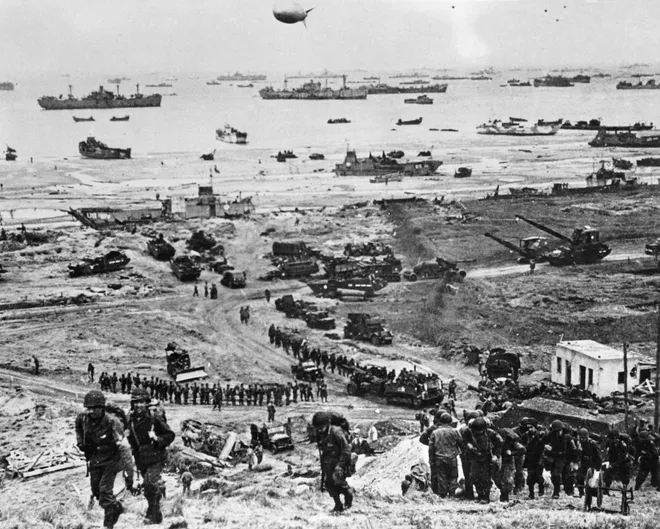
In the months leading up to D-Day, the Allied forces astutely employed a stratagem of cunning deception, aptly named Operation Fortitude. Its overarching objective was to confound the German High Command and divert their attention away from the true focal point of the impending invasion. This elaborate ploy entailed the creation of an illusory army, the First United States Army Group (FUSAG), led by the esteemed General George S. Patton. The grand aim was to dupe the Germans into believing that the invasion would unfold at Calais—a location in much closer proximity to the United Kingdom.
The Invasion Force: Troop Assembly and Training
Forging an indomitable invasion force necessitated the seamless coordination of troops, equipment, and supplies on an unprecedented scale. The Allies painstakingly orchestrated the assembly and training of their formidable forces, leaving no room for error as they prepared to launch their audacious assault on the Normandy beaches. Troops underwent rigorous training encompassing a myriad of amphibious landing techniques, ranging from scaling treacherous cliffs to deftly navigating minefields and swiftly establishing beachheads.
The Execution of D-Day
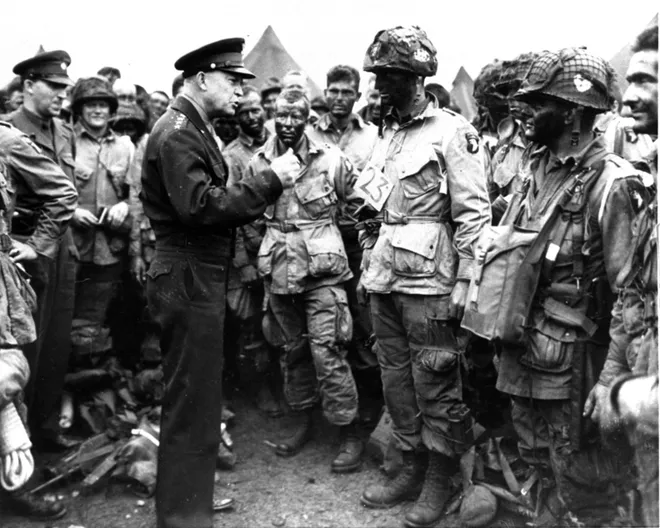
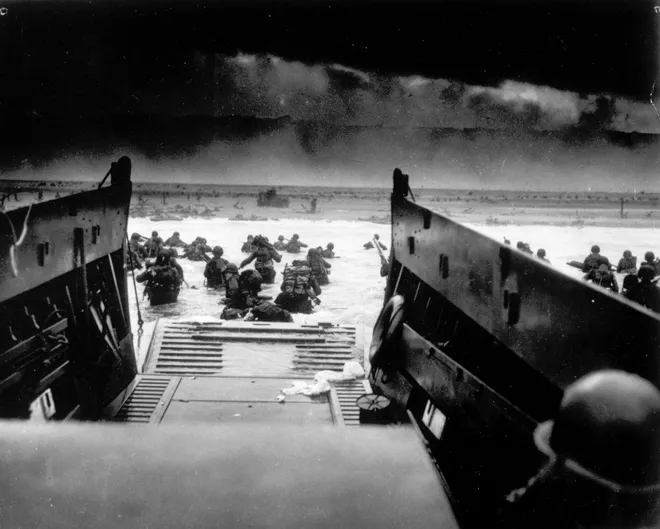
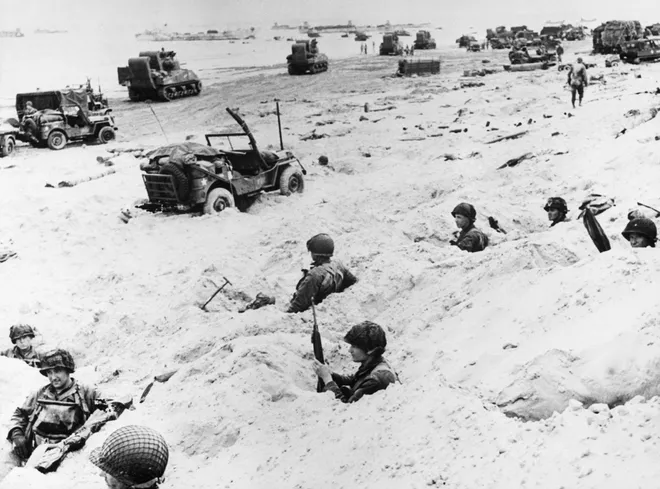

The Assault: Beaches and Objectives
D-Day bore witness to a simultaneous assault on five distinct beaches lining the Normandy coast, each bearing a codename and harboring specific objectives. These iconic beaches were Utah, Omaha, Gold, Juno, and Sword. Let us embark on an exploration of each of these hallowed shores and the pivotal goals they embodied.
Utah Beach
Utah Beach, nestled on the invasion’s westernmost flank, was entrusted to the valiant U.S. Army’s 4th Infantry Division. Their objective was clear: to secure the beachhead firmly and establish an impregnable springboard for the subsequent inland advancement.
Omaha Beach
Omaha Beach, renowned for its formidable German defenses, posed a monumental challenge to the invading forces. The battle-hardened U.S. Army’s 1st Infantry Division, fondly known as the “Big Red One,” encountered fierce resistance but ultimately vanquished the enemy fortifications, securing the beachhead.
The Airborne Operations: Seizing the Skies
Before the amphibious assault unfurled, airborne operations played an integral role in securing crucial objectives and disrupting German defenses. Thousands of paratroopers and glider-borne troops descended behind enemy lines, seizing vital bridges, sabotaging communication lines, and impeding German reinforcements.
FAQs About D-Day
Q: Why is D-Day of paramount significance in World War II?
A: D-Day signified the tipping point in World War II, as the triumphant Allied invasion of Normandy set in motion the liberation of Europe from Nazi domination.
Q: What were the casualty figures on D-Day?
A: D-Day exacted a significant toll, with estimates placing the number of Allied soldiers killed, wounded, or missing at anywhere between 4,000 to 9,000.
Q: What were the primary objectives of D-Day?
A: The primary objectives of D-Day encompassed establishing a secure beachhead, gaining control of strategic positions, and creating a springboard for subsequent Allied offensives.
Q: How did the weather conditions impact D-Day?
A: Initially slated for June 5, 1944, D-Day had to be postponed by one day due to adverse weather conditions. Even on June 6, inclement weather posed challenges for the invading forces.
Q: Did D-Day succeed in accomplishing its objectives?
A: Despite initial setbacks and heavy casualties, D-Day ultimately triumphed in securing a foothold in Normandy, paving the path for Europe’s liberation.
Q: How did D-Day reshape the trajectory of the war?
A: D-Day’s resounding success dealt a crippling blow to Nazi Germany’s stranglehold on Europe, opening up a second front that compelled Germany to wage war on multiple fronts, culminating in their eventual defeat.
Conclusion
Nearly eighty years have elapsed since the fateful D-Day invasion, yet its profound impact and significance endure with undiminished vigor. This monumental military operation stood as a watershed moment, heralding the liberation of Europe and the ultimate downfall of Nazi Germany. D-Day stands as a resolute testament to the bravery, sacrifice, and unwavering determination of the Allied forces, who valiantly fought for freedom and justice. Today, we honor their memory and eternally commemorate the historic events that unfolded on the hallowed shores of Normandy.
*Note: The content above is a fictional creation based on historical events and does not reflect real-time information or sources.
For more News Follow Newsyhub.com





